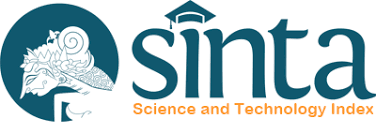Study of Living Hadith on the Khataman al-Qur’an Tradition over Graves in North Padang Lawas
Studi Living Hadis Tradisi Khataman al-Qur'an di atas Kuburan di Padang Lawas Utara
DOI:
https://doi.org/10.14421/livinghadis.2022.4277Keywords:
Tradition, Al-Qur'an, Lived Hadith, Padang Lawas UtaraAbstract
This study aims to describe the tradition of Quranic Khataman in the graveyard preserved by the people of North Padang Lawas. This research uses a qualitative type with a living hadith approach. This research shows that this tradition is a public reception to the hadith relating to the remains of the pilgrims leaving the burial area as well as the reward and prayers from a righteous child to both parents. There are several hadiths that form the basis of theological references to the implementation of the Quranic khatam tradition. First, the narration of Bukhari's (1252) and (1338). Second, the narration of Muslims (3084) and (1631). There are several important questions that are the focus of research. First, what is the urgency and procedure for carrying out the Khataman Al-Qur'an tradition? Second, how the Study of Living Hadith plays a role in the tradition of khataman al-Qur'an over the grave. The results of this study found the conclusion that the tradition of quranic khatam above the graveyard is the reflection of the understanding of the hadith. and the procedures for its implementation are adapted to the guidance of local clerics and religious leaders.
 Abstract viewed: 661 times
|
Abstract viewed: 661 times
|
 pdf downloaded = 634 times
pdf downloaded = 634 times
References
Abu Zakariya asy-Syafii. (1996). At Tibyan Fi Adab Hamalatil Quran. Dar Ibnu Hazm.
A.J. Wensinck. (1976). Al-Mu‘jam al-Mufahras li Alfazh al-Hadits an-Nabawi. J. Brill.
Al-Bukhari, M. bin I. (1987). Sahih al-Bukhari. Dar Al-Fikr Al-’Arabiy.
Ali Imron, D. (n.d.). Hermeneutika al-Qur’an dan Hadis. Elsaq Press.
Amidi, S. (2022, September 18). [Personal communication].
Amin, M. D. (2002). Islam dan Kebudayaan Jawa. Gema Insani Media.
Cliffotz Geertz. (1973). The Interpretation of Cultures. Basic Books.
Dewi, S. K. (2016). Otoritas Teks Sebagai Pusat dari Praktik Umat Islam. Jurnal Living Hadis. https://doi.org/10.14421/living-hadis.2016.0101-09
Erawadi, E. (2014). Pusat-Pusat Perkembangan Tarekat Naqsyabandiyah Di Tapanuli Bagian Selatan. MIQOT: Jurnal Ilmu-Ilmu Keislaman, 38(1), 81–96. https://doi.org/10.30821/miqot.v38i1.53
Hakiemah, A. (2019). Khataman al-Qur’an di Pesantren Sunan Padanaran Yogyakarta: Kajian Living Hadis. Mutawatir, 4(1), 88–100.
Harahap, H. U. (2020). Akomodasi Hukum Islam Terhadap Hukum Adat Padang Lawas Utara: Upacara Perkawinan.
Harahap, M. U. (2022, September 24). [Personal communication].
Ibrahim Gultom. (2010). Agama Malim di Tanah Batak. Bumi Aksara.
Imam Abi Husen Muslim bin Hajaj. (1992). Shahih Muslim. Dar Al-Fikr.
M. Quraisy Shihab. (2007). Membumikan al-Qur’an: Fungsi dan peran wahyu dalam kehidupan masyarakat. Mizan.
M.O. Parlindungan. (1964). Tuanku Rao. LKIS.
Nuraini & Wardatul. (2020). Tradisi Mengaji al-Qur’an di kuburan pada masyarakat Indonesia. Tafse Jurnal of Qur’anic Studies, 5(3), 248–253.
Pulungan, A. (2018). Peran dalam Proses Interaksi Antara Nilai-nilai Adat dengan Islam Peran dalam Proses Interaksi Antara Nilai-nilai Adat Dengan Islam Pada Masyarakat Mandailing Dan Angkola Tapanuli Selatan. In Perdana Publishing.
Siregar, A. A. (2022, September 24). [Personal communication].
Siregar, I. R., & Aini, S. (2022). (Jurnal sejarah peradaban islam). 8311, 67–77.
Suryadilaga, M. A. (2014). Mafhūm al-salawāt ’inda majmū’at Joged Shalawat Mataram: Dirāsah fī al-hadīth al-hayy. Studia Islamika, 21(3), 535–578. https://doi.org/10.15408/sdi.v21i3.1220
Uka Candrasasmitha. (1985). The Arrival and Expansion of Islam in Indonesia Relating to Souttheast Asia. Masagung Foundation.
Zamzami, M. S. (2020). Tradisi Pakaian Baru pada Hari Raya di Madura: Studi Living Hadith. Mutawatir : Jurnal Keilmuan Tafsir Hadith, 10(2), 267–291. https://doi.org/10.15642/mutawatir.2020.10.2.267-291
Downloads
Published
Issue
Section
License
Copyright (c) 2023 Ilham Ramadan

This work is licensed under a Creative Commons Attribution-ShareAlike 4.0 International License.
- Authors who publish with this journal agree to the following terms:
- Authors retain copyright and grant the journal right of first publication with the work simultaneously licensed under a Creative Commons Attribution License that allows others to share the work with an acknowledgement of the work's authorship and initial publication in this journal.
- Authors are able to enter into separate, additional contractual arrangements for the non-exclusive distribution of the journal's published version of the work (e.g., post it to an institutional repository or publish it in a book), with an acknowledgement of its initial publication in this journal.
- Authors are permitted and encouraged to post their work online (e.g., in institutional repositories or on their website) prior to and during the submission process, as it can lead to productive exchanges, as well as earlier and greater citation of published work.
















